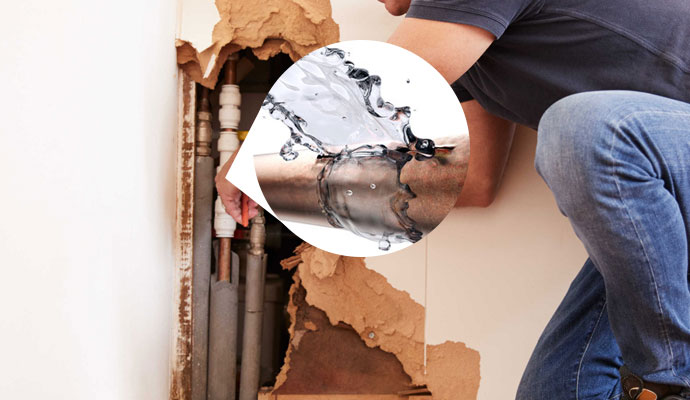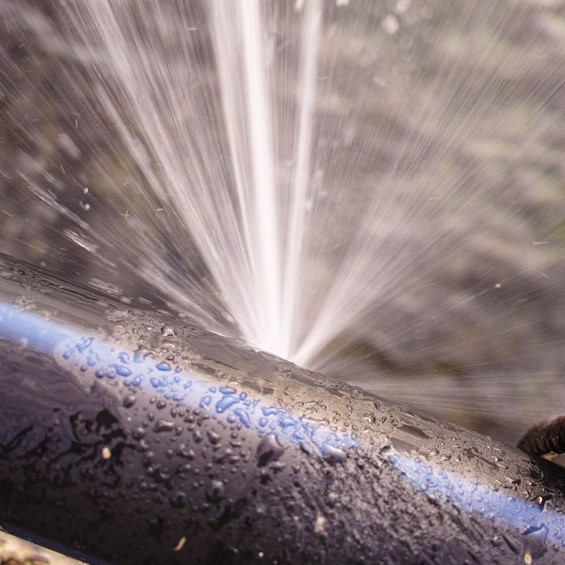Recognizing and Efficiently Addressing a Broken Pipe: A Practical Guide
Recognizing and Efficiently Addressing a Broken Pipe: A Practical Guide
Blog Article
Presented here below you will find more amazing answers related to How to install a dishwasher safely.

A ruptured pipeline is a major emergency; you can only stand as you see water you pay very much to rejoin with the planet. In worse instances, you observe a swimming pool on your cooking area floor, which is a wonderful trip hazard, specifically if you have kids around. If the pipe that ruptured remained in your walls, trouble: you may need to repaint that whole section.
Just how can a disaster like a ruptured pipeline be avoided and also managed? Well, by paying attention to your professional emergency plumbing professionals and adhering to these guidelines.
How do I understand when my pipelines have ruptured?
Changing water pressures
Pipelines do not simply burst in a day. You may have seen that your kitchen area tap or shower doesn't run quickly when you turn the tap. It might pause for a few seconds and afterwards blast you with even more pressure than usual.
In other instances, the water may appear typical at first, after that decrease in stress after a couple of seconds.
Damp wall surfaces and water spots
Prior to a pipe bursts, it will leakage, the majority of times. If this persistent dripping goes undetected, the leakage might finish right into a wide wound in your pipeline. One easy means to prevent this emergency is to look out for damp walls advertisement water discolorations. These water discolorations will lead you right to the leak.
Puddles under pipelines as well as sinks
When a pipe bursts, the discharge forms a pool. It may show up that the pool is expanding in dimension, and also despite how many times you mop the pool, in a few minutes, there's another one waiting to be cleansed. Typically, you may not be able to map the pool to any noticeable pipelines. This is a sign to call a professional plumber.
Untraceable leaking sounds
Pipe bursts can occur in one of the most unpleasant areas, like within concrete, inside wall surfaces, or under sinks. When your house goes quiet, you might have the ability to hear an aggravatingly consistent leaking noise. Also after you have actually inspected your shower head and kitchen faucet, the trickling might continue.
Dear viewers, the trickling might be coming from a pipe inside your walls. There isn't much you can do regarding that, except tell an expert plumber.
Turn off the Water
When water freezes, it expands in volume by concerning 9 percent. And also it increases with remarkable pressure: The pressure inside pipes might go from 40 pounds per square inch to 40,000 psi! No pipe can hold that much pressure, so it breaks open. The break might happen where the ice forms, but more frequently, it takes place where water stress discovers a vulnerable point in the pipe. That might be inches and even feet from the frozen location. Find the water shutoff valve and turn off the water to avoid even more damage. You could also need to turn off the electrical power as well, depending on where the leaks occurs and just how large it is.
Infected water
Lots of people presume a ruptured pipe is a one-way outlet. Rather the contrary. As water drains of the hole or laceration in your plumbing system, impurities discover their method.
Your water may be polluted from the resource, so if you can, examine if your water container has any troubles. Nonetheless, if your drinking water is provided and also detoxified by the city government, you should call your plumber quickly if you see or scent anything amusing in your water.
What do I do when I detect a burst pipeline?
Your water meter will certainly continue to run also while your water wastes. To minimize your losses, discover the major controls and transform the supply off. The water mains are an above-ground framework at the edge of your home.
How to Fix & Detect a Leaking Pipe
How Do I Know if a Pipe is Leaking?
Leak detection tests can help you determine if your pipe has a leak. Even if you don’t see an apparent leak, you should still conduct leak detection tests regularly to save water and money—and prevent major damage to your home.
Water meter. It can be helpful to figure out what your usual water meter usage numbers are and then monitor them regularly. To monitor your meter, first, turn off all water faucets in your home. Check the meter and write down the numbers. In a few hours, check the meter again. If the numbers have changed, you have a leak. Water gauge. Use a water gauge to test your water pressure. Your showerhead should produce a certain amount of water pressure based on its model and design. If the pressure is lower than it is supposed to be for that specific showerhead, your home likely has a leak. Puddles. Look inside your bathroom, laundry, and kitchen sink cabinets. Puddles around the cabinets or around toilets, tubs, showers, and washing machines indicate the presence of a leaking pipe. You may also notice loose tiles, peeling or flaking paint, or mold caused by water accumulation. Napkin test. Even if you don’t see any puddles, you may still have a leak. You can test for water leaks in the bathroom, laundry, and kitchen by wiping below-sink connections with a napkin, paper towel, or piece of toilet paper. If it becomes damp, you probably have a leaking pipe under the sink. Discolored walls. Walls that are discolored—usually with brown or yellow stains—or bulging might mean that they have been impacted by water damage caused by a leaking pipe. Smell. A leaky pipe will create sitting water, and over time, that water may develop a musty smell. If your home smells musty, but you can’t locate the source, it may be due to a leak. Steps for Fixing a Leaking Pipe
A leaky drain can be remedied by tightening the pipe base, replacing the drain seal, caulking the rim, and tightening the pipe nut. Similarly, a leaking toilet pipe can be treated by tightening the packing nut. You may also need to replace the valve. A leaky faucet may just need tightening or replacement of the washers. If that doesn’t work, consider replacing your faucet. If your pipe has a hole in it, you may want to use a pipe leak sealer or pipe leak tape. This quick fix for water pipe leaks can also temporarily fix a copper pipe leak. https://www.ahs.com/home-matters/quick-tips/how-to-tell-if-pipes-are-leaking/

Do you like more info about How to Prepare for Your Dishwasher Installation? Try to leave a remark below. We will be interested to see your ideas about this article. We are looking forward that you visit us again in the future. Are you aware of somebody else who is interested in the topic? Be sure share it. I love reading our article about How to Install and Connect a New Dishwasher.
Urgent plumbing issue? Connect now. Report this page